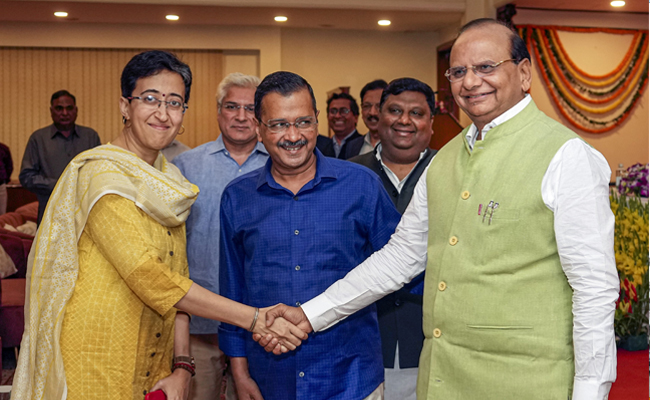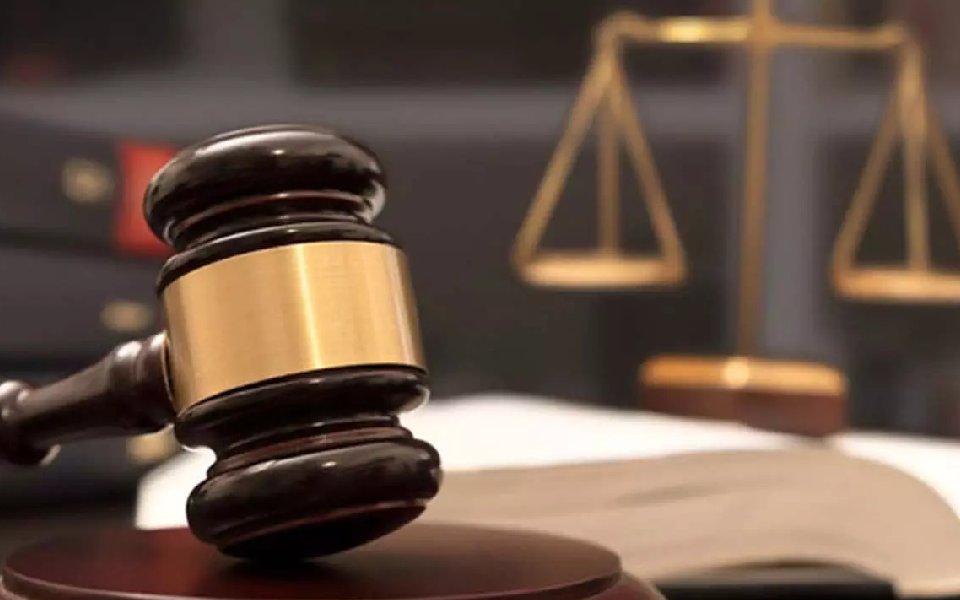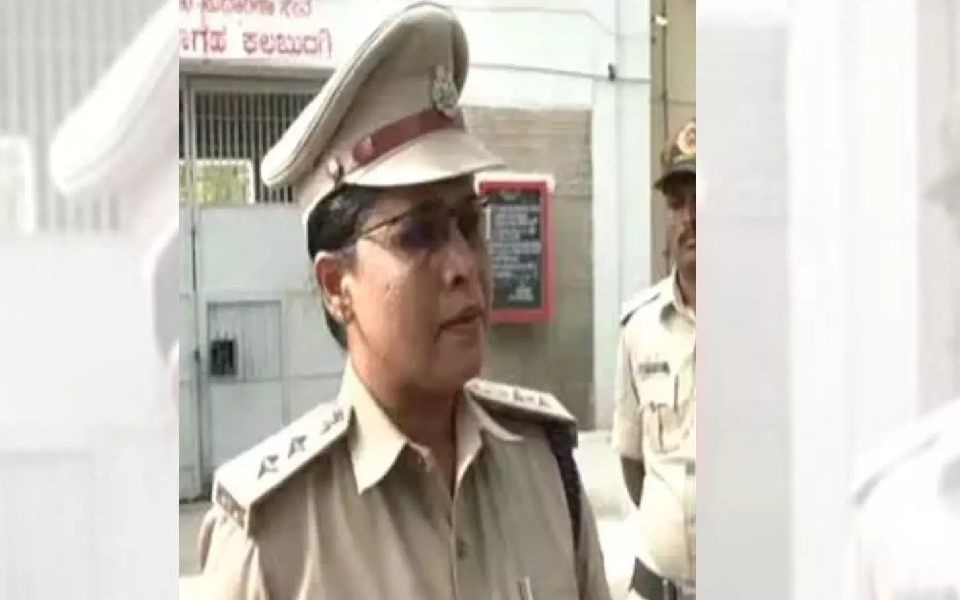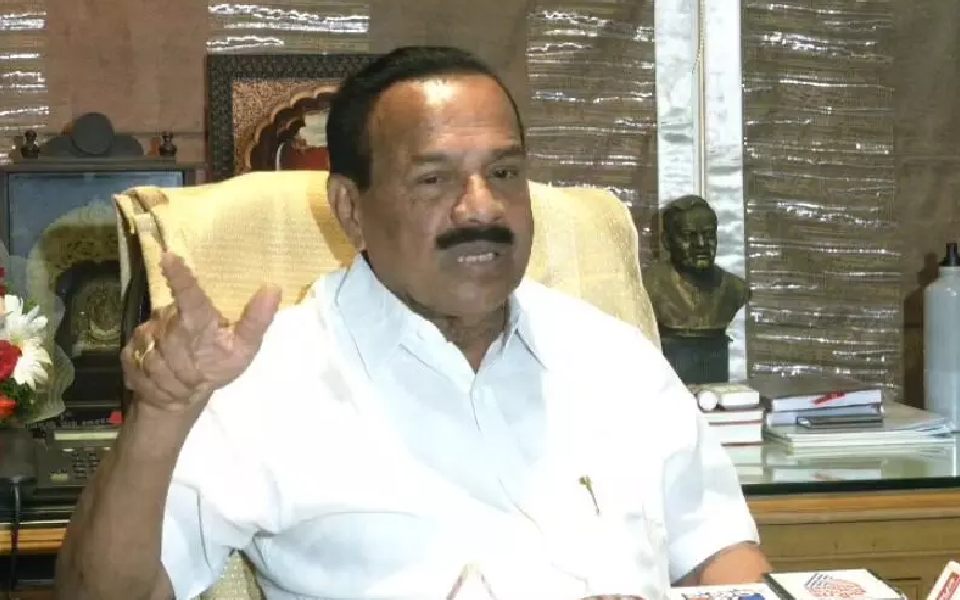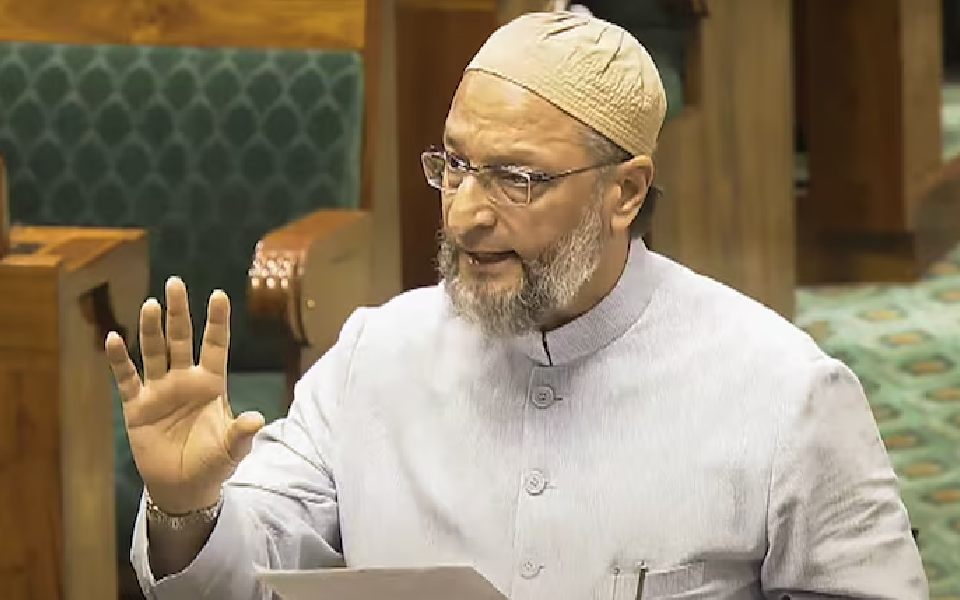New Delhi (PTI): Senior AAP leader Atishi will be Delhi’s new chief minister, the party unanimously agreed on Tuesday after Arvind Kejriwal proposed her name as his successor in a meeting of the party's legislators.
The 43-year-old who holds 14 portfolios, including finance, education and revenue and was amongst those holding the fort while Kejriwal was in jail, will be the third woman chief minister of Delhi after Congress’ Sheila Dikshit and BJP’s Sushma Swaraj.
Kejriwal will meet Lt Governor V K Saxena at Raj Niwas at 4.30 pm to tender his resignation as chief minister, paving the way for Atishi's appointment as his successor.
"He will inform the LG about Atishi being the new leader of AAP's legislative party in the Delhi Assembly," a party leader said.
After the resignation, a delegation of AAP legislators will meet the lt governor to stake claim for formation of a new government led by Atishi, party leader Gopal Rai told reporters.
Though Atishi was a frontrunner for the post and considered close to both Kejriwal and his second in command Manish Sisodia, the speculation over who would succeed him was intense. Ending the debate, Kejriwal proposed the name of the Kalkaji legislator at a meeting of the AAP legislative party and it was accepted unanimously.
Party leaders said the Delhi Assembly will be convened on September 26 and 27.
In a surprise decision two day after he was released on bail from Tihar Jail, Kejriwal on Sunday announced that he would resign as chief minister and would only return if people give him a "certificate of honesty" in the upcoming Delhi Assembly polls. He also sought early polls in the city.
The assembly's term ends on February 23 next year and elections are expected to be held sometime early February.
Atishi, given credit for many of the AAP government's achievements in the education sector, was inducted into the Delhi cabinet in March last year and has been playing a crucial role both in the government as well as the party when AAP convener Kejriwal was arrested on March 21 in connection with the excise policy case.
The daughter of Delhi University professors Vijay Singh and Tripta Wahi, Atishi did her schooling from Springdales School and went on to graduate from St Stephen’s College. She did her Masters from Oxford University.
The BJP on Monday said Kejriwal's decision to resign as chief minister was borne out of compulsion and not driven by principle. The saffron party described his move as "drama" and a "confession of crime" and wondered if he had offered to quit because of infighting in AAP.
Dikshit was Delhi's longest serving chief minister of Delhi, holding office for 15 years from 1998 to 2013. Swaraj ruled Delhi for 52 days from October 12, 1998.
Let the Truth be known. If you read VB and like VB, please be a VB Supporter and Help us deliver the Truth to one and all.
Dhaka, Nov 28: Bangladesh High Court Thursday rejected a petition seeking a ban on ISKCON's activities in the country, days after a lawyer was killed in a clash between security personnel and supporters of a Hindu leader, previously linked to the religious group.
A lawyer had sought a ban on the International Society for Krishna Consciousness (ISKCON) after placing some newspaper reports related to the organisation on Wednesday.
"The two-member High Court bench of Justice Farah Mahbub and Debashish Roy Chowdhury on Thursday declined to ban the ISKCON activities in Bangladesh," a spokesman of the attorney general's office said.
He said the bench made the decision after the attorney general's office submitted a report on the action taken by the government regarding the death of assistant government prosecutor Saiful Islam Alif in the northeastern port city of Chattogram earlier this week.
Hindu leader Chinmoy Krishna Das Brahmachary, arrested earlier this week, was sent to jail by a Chattogram court on sedition charges, sparking a violent protest during which advocate Alif was killed. Chinmoy was earlier expelled from ISKCON.
"Right at this moment, the situation does not warrant the intervention of the (High) court as the State is carrying out its job (regarding the matter),” Justice Mahbub was quoted as saying by the spokesman.
The decision came a day after Attorney-General Mohammad Asaduzzaman urged the court not to take any decisions on the ISKCON issue as the government has started taking the required action.
Additional Attorney General Aneek R Haque and Deputy Attorney General Asad Uddin informed the bench that three separate cases have been filed in connection with the murder of the lawyer and ISKCON's activities, and 33 accused have been arrested in these cases.
The bench then hoped that the government would remain cautious about protecting the law and order situation and the lives and properties of the people of Bangladesh.
Meanwhile, ISKCON Bangladesh refuted allegations linking the organisation to the lawyer's killing, saying the claims were baseless and part of a malicious campaign.
"A series of false, fabricated, and malicious campaigns is being spearheaded targeting ISKCON Bangladesh, particularly in connection with recent events. These efforts are aimed at discrediting our organisation and creating societal unrest," general secretary of the organization Charu Chandra Das Brahmachari said.
Speaking at a press conference at the organisation’s head office, he said ISKCON Bangladesh was never involved in "communal or conflict-driven activities and will continue to promote unity and harmony".
"We have already clarified the matter multiple times through press conferences and official communications with the government and administrative authorities. Regrettably, certain groups continue to deliberately spread false propaganda against our organisation and make unreasonable demands, such as banning ISKCON," Das said.
He said that Chinmoy was previously expelled from the organisation along with two others for violating its rules and none of their activities were connected to ISKCON.
ISKCON Bangladesh President Satya Ranjan Baroi also spoke at the press conference, saying their organisation was dedicated to communal harmony, religious tolerance, and the welfare of humanity and “the allegations are an attempt to tarnish our religious and social reputation".
Jatiyatabadi Ainjibi Forum on Thursday staged a protest in front of the Supreme Court Bar, protesting the lawyer's killing and demanding the ban on ISKCON.
The group is regarded as the lawyers’ wing of ex-premier Khaleda Zia’s Bangladesh Nationalist Party (BNP).
Leaders of the Anti-Discrimination Students Movement, which led the mass upheaval to oust deposed prime minister Sheikh Hasina’s regime on August 5, also demanded the ban on ISKCON.
Separately, a group of Supreme Court lawyers sent a legal notice to the Bangladesh government on Wednesday seeking the ban on ISKCON describing it as a “radical organisation.”
India on Tuesday noted with “deep concern” Chinmoy's arrest and denial of bail and urged Dhaka to ensure the safety and security of Hindus and all other minority groups.
Earlier, the ISKCON had urged the Bangladesh authorities to promote "peaceful coexistence" for Hindus in the country as it "strongly" denounced the arrest of the Hindu leader.
Chinmoy, the spokesperson for Bangladesh Sammilita Sanatani Jagran Jote, was arrested from Dhaka’s Hazrat Shahjalal International Airport on Monday as he was about to fly to Chattogram to join a rally.
He was denied bail and sent to jail by the Chattogram’s Sixth Metropolitan Magistrate court in a sedition case on Tuesday.

